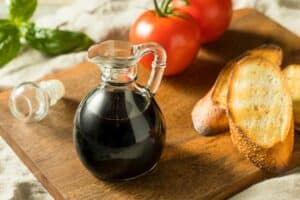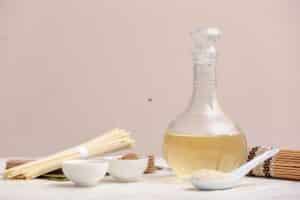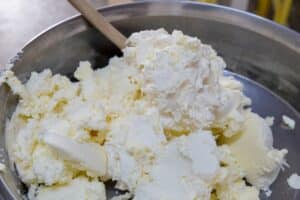Agave nectar may sound like a fancy ingredient to many, but there are several agave nectar substitutes you can use that you likely already have in your kitchen. Some examples are honey, white sugar, and maple syrup.
People gravitate to agave nectar since it’s a sugar derived from the Agave plant—the same plant that tequila comes from! Agave nectar has a low glycemic index, but it’s high in fructose. So, like all the agave substitutes we’ll be covering here, it’s important to consume it in moderation.
Agave nectar tends to be sweeter than many sweeteners. So, we surveyed several agave alternatives, accounting for their ratios, texture, and nutritional makeup. So, we’ll share the five agave substitutes that mirror agave the closest.
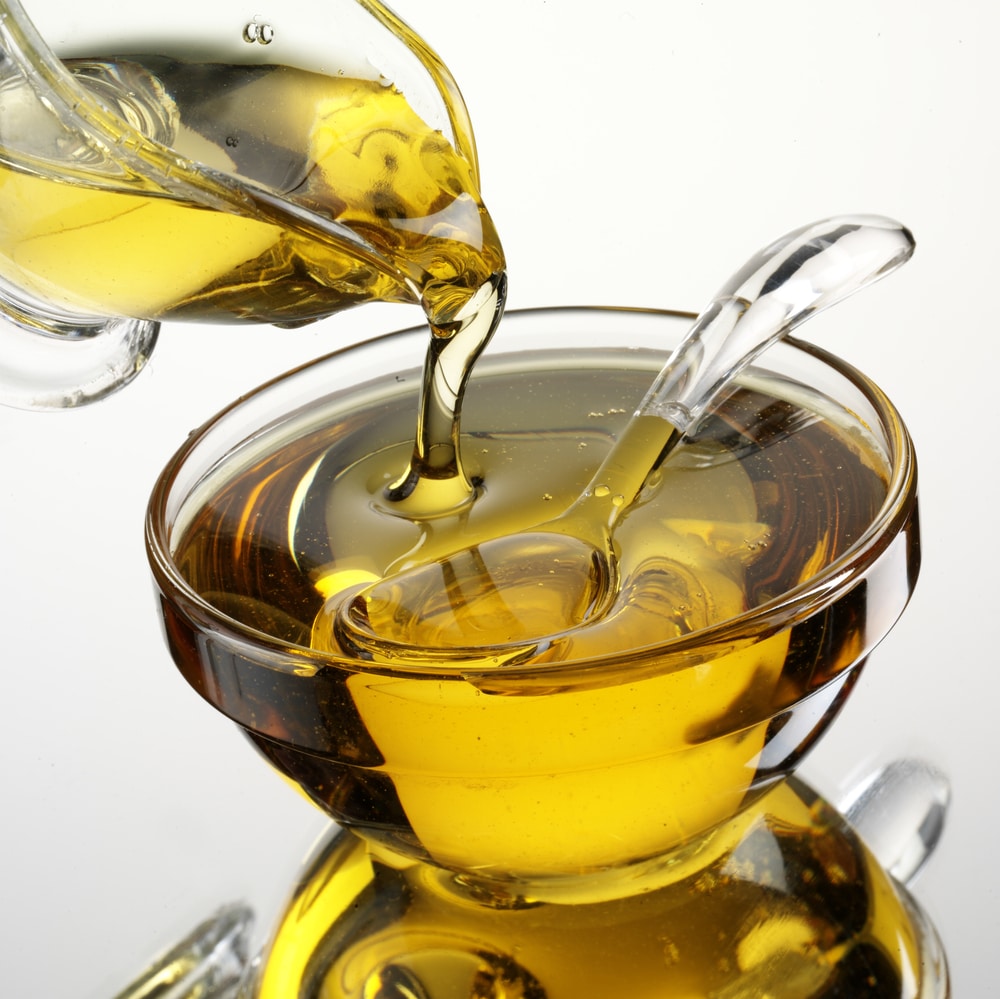
Recommended Agave Nectar Substitute
Below are the top five substitutes we recommend when you run out of agave nectar or want to experiment with changing your sweetener.
1. Honey
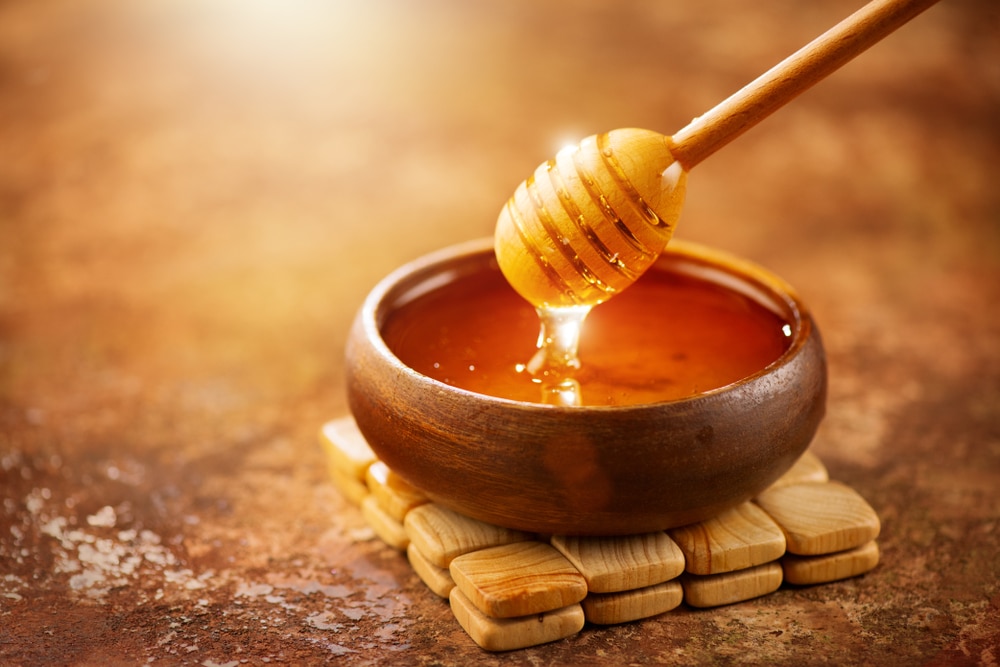
Honey is easily the closest substitute for agave nectar. It has a similar color and usually comes in a squeezable bottle like agave, making it great for sweetening tea. It also has a similar sugar content and has about 60 calories per tablespoon like agave.
You can use honey in any recipe that calls for agave nectar, such as:
- Biscuits
- Cakes
- Marinades
When using honey as a substitute for agave nectar, you can use a 1:1 ratio. That said, honey has a thicker consistency than agave. Therefore, it can make it more challenging to mix it in recipes. However, you shouldn’t have to make any adjustments because of it.
Another factor to consider when using honey as an agave substitute is its taste. If your recipe calls for a large quantity of agave, using honey may cause your dish to take on a slightly honey-like flavor.
If you’re on a health kick, consider using raw honey. Unlike regular honey, which is heavily processed, raw honey only gets strained before bottling. As a result, it keeps more nutrients and antioxidants.
2. Simple Syrup
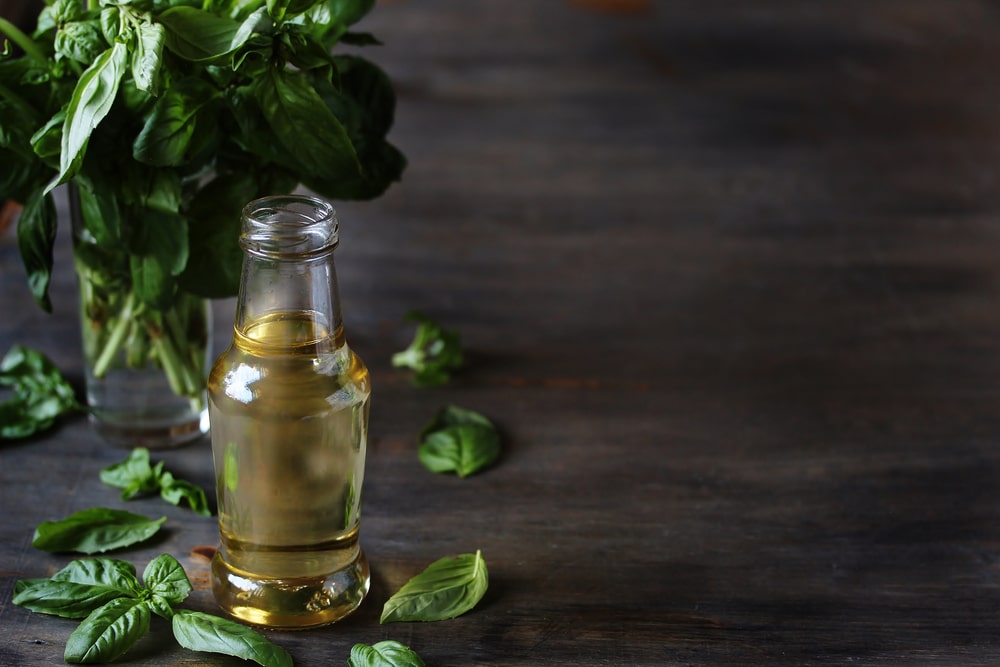
There’s no need to run to the store if you don’t have simple syrup in your house—all you need is some granulated sugar and water.
What makes simple sugar such a great agave syrup substitute is that almost everyone has this ingredient in their homes, and it’s an excellent option for vegans since they can’t eat honey.
While you can use simple syrup in any recipe calling for agave nectar, we find that it tends to work best in cocktails and other drinks you want to sweeten. Part of the reason for this is that simple syrup is thinner than agave nectar. Therefore, you won’t notice this difference as much in a drink as you would in a recipe.
If you don’t have a bottle of simple syrup on hand, you can make it by following these steps:
- Mix equal parts of granulated sugar and water.
- Set the mixture on the stove and turn on the heat to medium.
- Wait for the mixture to dissolve, then let it cool (there’s no need to bring it to a boil).
- Pour the mixture into a glass container and store it in your fridge.
When using simple syrup, add the same amount to your drinks as you would agave nectar. You can expect your simple syrup to last around one month, so get your agave nectar recipes ready to make use of it.
3. Maple Syrup
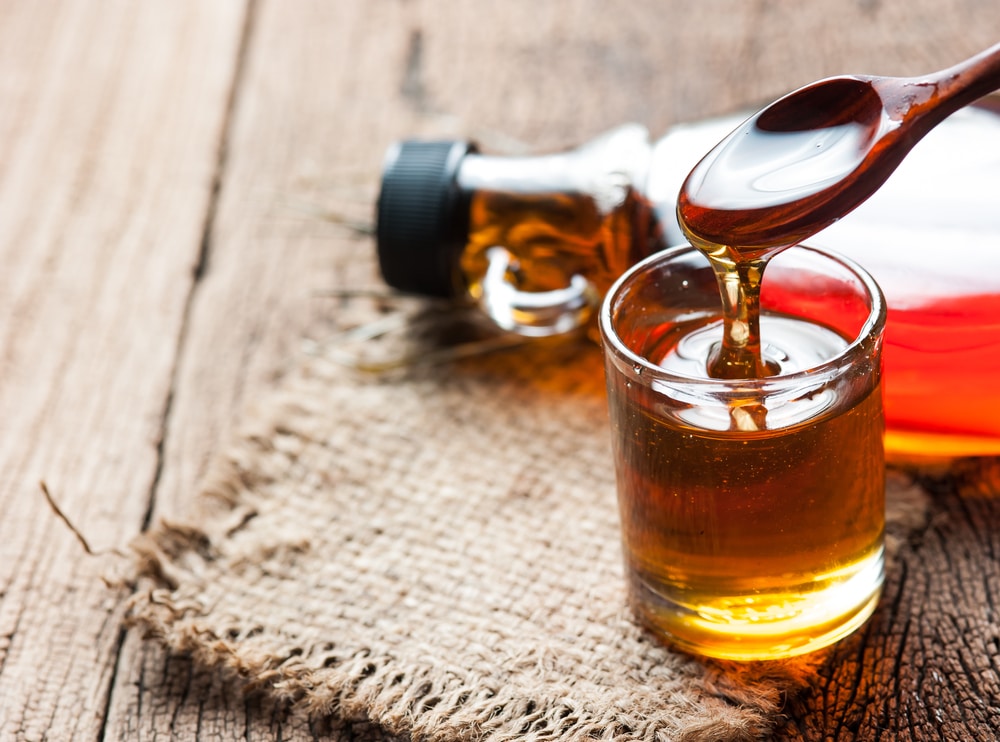
If part of your reasoning for wanting to use agave nectar as a sweetener is because of its nutritional content, such as riboflavin and vitamin K, maple syrup is an excellent choice. Like agave, maple syrup is a source of riboflavin. It also contains manganese, calcium, and other vitamins and minerals.
As with so many great things, there’s a catch—maple syrup has a strong flavor. Some people love the richness it brings to the food or drinks they’re eating. Others feel put off by how much it changes the taste of their food or drink.
For this reason, using a substitute for agave nectar such as maple syrup is often best when a recipe doesn’t require a large amount.
The good news is that you don’t have to run complicated math equations to figure out how much maple syrup to use. Whatever the recipe calls for in agave nectar is the amount you can use in maple syrup.
Nevertheless, if you’re using maple syrup in a dessert, you might want to add a little more syrup than what the recipe calls for in agave nectar. The reason being is that maple syrup contains less sugar than agave.
In fact, agave nectar has a 90% fructose content, making it the highest fructose product of any commercial sweetener.
Can’t find maple syrup? See maple syrup substitutes.
4. Coconut Nectar
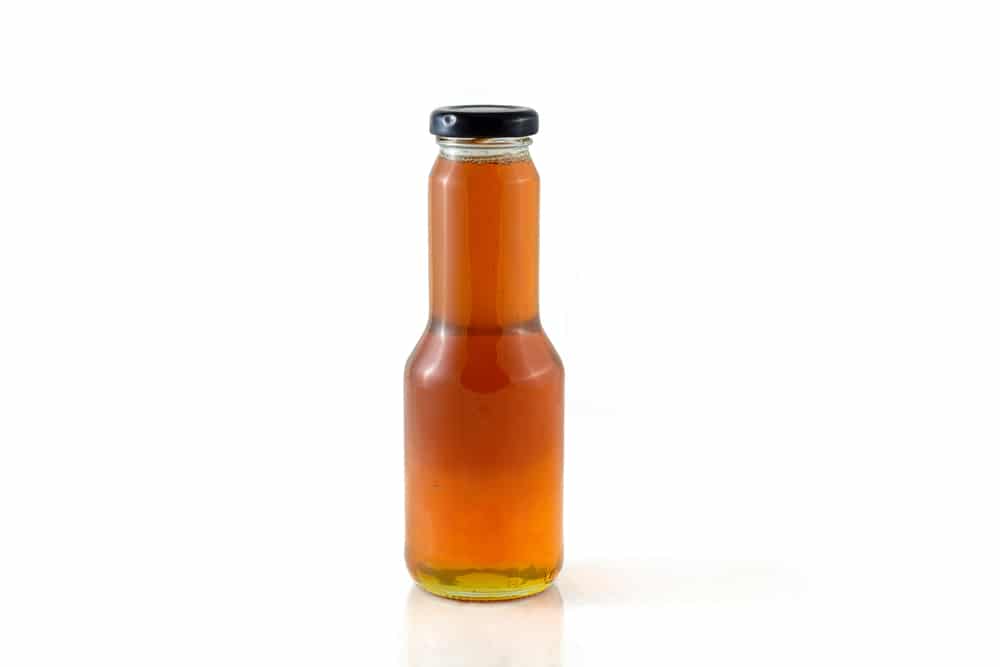
With the word “nectar” in its name, coconut nectar is an excellent agave nectar substitute. The product comes from a coconut tree’s flower sap. Furthermore, it undergoes little processing, making it a great choice for people wanting some nutrition with their sweeteners.
Coconut nectar is an excellent substitute for baked goods. You can use coconut nectar as a one-to-one replacement for any recipe that calls for agave. That said, if your recipe calls for a large quantity of agave nectar, you might find coconut nectar’s high cost a bit prohibitive.
It’s also worth considering your recipe’s flavor. Coconut nectar tends to have a strong coconut flavor, although the degree of that flavor depends on the brand.
Nevertheless, if you’re making coconut or chocolate-based desserts, you might find that coconut nectar enriches the flavor. On the other hand, it could be a jarring ingredient to use with certain other flavors.
If you use it in moderation, coconut nectar can offer a unique flavor to sweeten drinks. It has a slightly floral flavor, mixed with some earthy tones. If you let it linger on your tongue, you’ll often notice a bittersweet sensation.
5. White Sugar
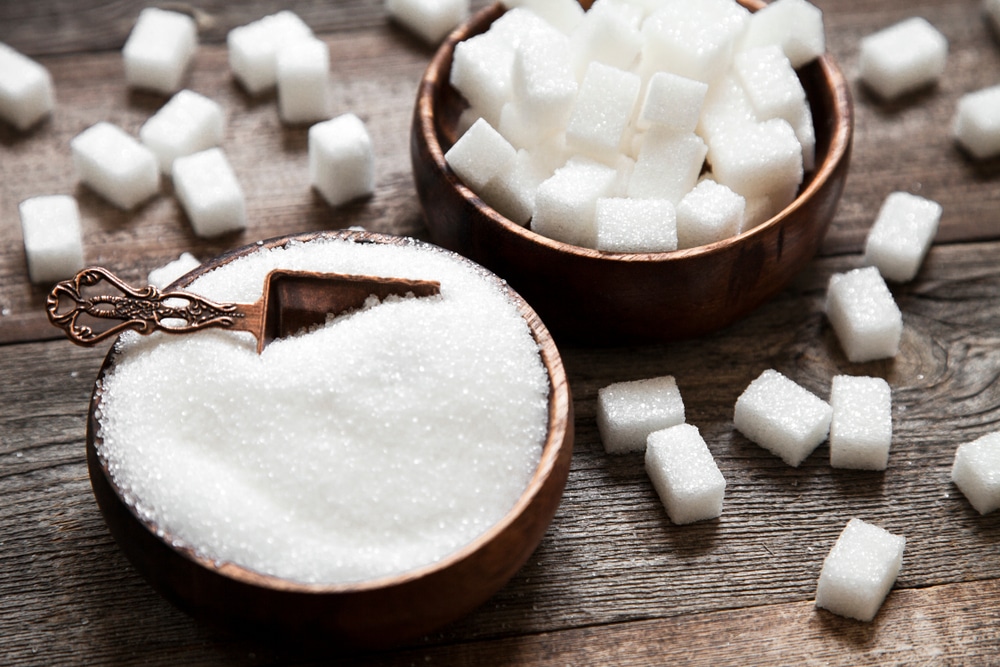
White sugar deserves its spot on this list because of its convenience—many people have white sugar lying around their house, and unlike simple sugar, you don’t have to do anything to prepare it.
However, even if white sugar weren’t convenient, it still makes for an excellent agave alternative. As you likely guessed, white sugar is a great agave nectar substitute for sweet baked good recipes. But you can also use it in sauces and salad dressings that call for agave.
Sugar is also more economical than agave nectar, so it’s a good choice for larger recipes. Unlike the other substitutes we covered here, you may need to pull out your calculator to figure out how much white sugar to use; you’ll need 1/3 cup of white sugar for every cup of agave nectar.
There’s another key difference between white sugar and the other agave alternatives on this list—white sugar isn’t liquid. Therefore, you’ll need to introduce liquid into the recipe by adding one of the following ingredients:
- Water
- Milk
- Oil
You can expect to need about ½ cup of your liquid of choice for every 1/3 cup of white sugar.
Frequently Asked Questions
If you’re still curious about how agave nectar substitutes work, we answer some common questions here.
Agave nectar has minimal processing and no additives. Agave syrup undergoes heavy processing and has a makeup similar to high-fructose corn syrup.
Agave nectar has trace amounts of vitamins and minerals, including vitamin C, potassium, and selenium. While it contains more nutrients than agave syrup, it would require a large consumption to get a substantial amount of these nutrients.
Yes, you can. However, many people use agave nectar since it doesn’t undergo as much processing as agave syrup. Therefore, sweeteners like maple syrup and honey often make for better agave nectar substitutes than agave syrup.
Honey is healthier than agave because it has less glucose. It also helps strengthen the immune system. Therefore, some people choose to use honey instead of agave even when they have agave in their kitchen.
Since agave syrup has a low glycemic index, it doesn’t cause a large spike in blood sugar. According to research, mice that consumed agave nectar had lower blood sugar levels than those that ate white sugar. Therefore, agave nectar is a better sweetener for people with diabetes than traditional sweeteners.

